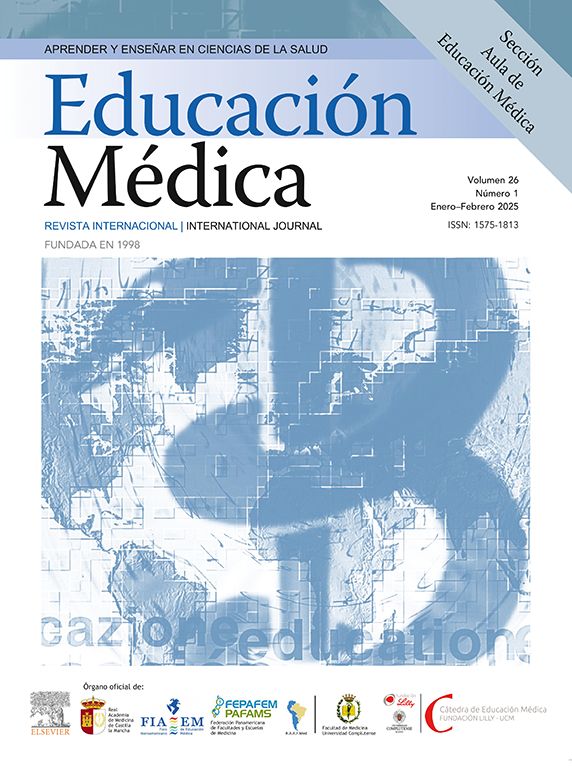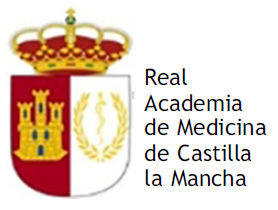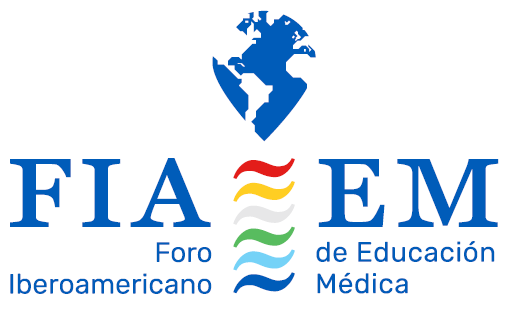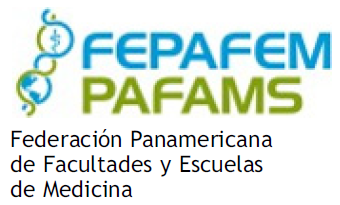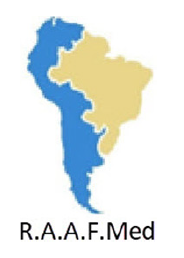For the teaching-learning process in medicine, knowing the effectiveness of active methods and didactic techniques is important to improve and guarantee competent professionals in their field.
Materials and methodsThe PRISMA 2020 guide was used to carry out this systematic review, identifying and analyzing the active methodologies used in the teaching-learning process of the different subjects in the medical sciences.
ResultsAfter searching scientific databases, 18 studies that met the research objectives were selected, allowing the active methodologies used in the teaching-learning process to be identified.
DiscussionActive methodologies complement the traditional methodology, allowing more dynamic learning with long-term knowledge retention, thus significantly improving grades and motivating students and teachers to commit to this process.
Conclusions and future workIn the effective teaching of medicine, using active and traditional methodologies is important because they promote the active participation of students and teachers, resulting in long-term and significant learning. A detailed analysis of active methods and their effective integration with traditional methods is needed.
Para el proceso de enseñanza-aprendizaje de la medicina es importante conocer la eficacia de los métodos y técnicas activas para mejorar y garantizar la formación de profesionales competentes en su campo.
MétodosSe utilizó la guía PRISMA 2020 para llevar a cabo esta revisión sistemática, en la que se identificaron y analizaron las metodologías activas utilizadas en la enseñanza y el aprendizaje de las diferentes disciplinas de las ciencias médicas.
ResultadosTras buscar en bases de datos científicas, se seleccionaron 18 estudios que cumplían los objetivos de la investigación, lo que permitió identificar las metodologías activas utilizadas en el proceso de enseñanza-aprendizaje.
DiscusiónLas metodologías activas complementan la metodología tradicional y permiten un aprendizaje más dinámico con un conocimiento a largo plazo, lo que mejora significativamente las notas y motiva a estudiantes y profesores a comprometerse con este proceso.
Conclusiones y trabajo futuroEn la enseñanza efectiva de la medicina, es importante utilizar metodologías activas y tradicionales, ya que fomentan la participación activa de estudiantes y docentes, lo que resulta en un aprendizaje significativo y duradero. Es necesario realizar un análisis detallado de los métodos activos y su efectiva integración con los métodos tradicionales.
The higher education system has adopted models that meet modern pedagogical requirements,1–3 and the transmission of knowledge has evolved and adapted to advancements, resulting in a dynamic and interactive education.2 Traditional classroom teaching, where the teacher imparts knowledge, is no longer the norm. Education constantly challenges implementing new models or systems to ensure learning. Therefore, flexible education allows students to develop their skills and acquire knowledge at their own pace, using their tools and integrating information technologies with pedagogical elements.2,3
Transferring knowledge from teacher to student has been the focus of traditional and unilateral teaching customs. However, more than this approach is needed to meet the new challenges in the health field. Linear learning has become a system that enables the development of skills and critical thinking in students, transforming them into knowledge generators with the support and guidance of teachers.2–4 This scenario has encouraged the improvement of education quality.4–8 Consequently, complex disciplines such as medicine require specific didactic techniques and methodologies. For instance, applying current pedagogical tools and active methods is essential to promoting active participation and meaningful, comprehensive learning for future health professionals.
The Covid-19 pandemic has highlighted the need for education to adapt to new teaching and learning models. The virtual system has become essential for this challenge, but it may not be the most recommended option for the health sector.9–11 As a result, new strategies are being adopted, including the following: The text already appears to meet the desired characteristics and is free from errors. Therefore, no changes have been made.
In medicine, teaching methodologies have evolved significantly with the advance of technology and the educational needs of health professionals. Today, the most widely used methodologies are e-learning, learning with electronic devices, and Team-Based Learning (TBL). E-learning has made learning more flexible, offering access to educational content at a distance through digital platforms, facilitating knowledge acquisition through mobile tools, such as tablets and smartphones, and providing interactivity and immediate access to information. Finally, team-based learning (TBL) has been consolidated as an effective strategy in medical education, promoting collaboration among students for clinical problem-solving and evidence-based decision-making.12,13
It is crucial to understand the effectiveness of active methodologies and didactic techniques in the health sector to enhance and ensure medical students' teaching and learning process, considering the specific requirements of their field of study. Therefore, this research aims to identify the most commonly used and effective active methodologies in the last five years for training medical professionals and developing clinical skills, critical thinking, problem-solving abilities, motivation, and academic commitment.
Materials and methodsThe systematic review was conducted using the PRISMA 2020 guide.14 Protocol registration on the official PRÓSPERO website was not taken into account, as the main objective of this research is to determine and analyze the active methodologies used in the teaching and learning process of various medical science subjects.
Eligibility criteriaThe inclusion criteria comprised cross-sectional and qualitative studies published between 2018 and 2023. These studies applied active methodologies in the teaching-learning process for the School of Medicine undergraduate students. Studies that did not answer the research questions posed were excluded. Additionally, works in languages other than English and Spanish, studies with unspecified sample selection, and studies with non-representative samples were also excluded.
Sources of informationThe following databases were consulted for the search phase: Scopus, Web of Science, Taylor & Francis, Science Direct, Wiley Online Library, and ACM. In addition, the results were enhanced using scientific literature search engines such as PUB-MED and Google Scholar.
Search strategiesLogical operators and special fields were used in each database to broaden or narrow the search as needed. The keyword search strategy methodologies, pedagogy, pedagogy, didactics, techniques, tools, teaching, and medicine were employed. This generated the search string methodologies OR pedagogy OR didactics OR technique OR tools OR teaching AND medicine. In this way, we obtained a specific selection of the desired bibliography.
Study selection processThree independent authors conducted the search using the databases described above between May 2023 and August 2023. The authors began by selecting relevant studies based on their titles, followed by analyzing the summaries of the works obtained in this first stage. Subsequently, the authors selected the studies that met the objectives set for the development of this work.
Data extraction processThe authors captured and synthesized the results in an Excel spreadsheet, considering the year of publication, author, title, subject, population, methodology, tool, country, complications, benefits, significant differences in learning, and future work.
ResultsA total of 18 articles were selected from the initial search, which consisted of four phases. In the first phase, 533 results were identified from Scopus, 20 from Web of Science, 10 from Taylor & Francis, 6 from PUB-MED, 220 from Science Direct, 21 from Wiley Online Library, 90 from ACM, and 1900 from Google Scholar. In the second selection phase, 2800 studies were analyzed based on their title, abstracts, and whether they were in Spanish or English. A total of 2670 were discarded for requiring an active teaching-learning methodology and for not being open access. In the third eligibility phase, 130 studies were analyzed through a complete text reading, leaving out 70 papers. The fourth inclusion phase selected 18 studies that met our objectives. Fig. 1 illustrates this selection process.
An analysis was conducted on all 18 selected papers to answer the research questions posed at the beginning of the work. These questions were:
RQ1: What active methodologies and didactic techniques are used in medical education?
RQ2: Which countries are the pioneers in applying active methodologies and didactic techniques in medicine?
RQ3: What are the benefits of active methodologies in medical education, as expressed by teachers and students?
RQ4: What complications or problems are perceived when using active methodologies in medical education?
RQ5: Are there significant differences in learning medicine when using active methodologies?
RQ6: What are the future works that can be proposed in teaching medicine by using active methodologies?
The information in Table 1 illustrates the answers to these questions.
Analysis of Chosen Studies.
| ID | Year | Refe | Title | Subject | Population | Result | Applied Methodology | Developed Tool | Country |
|---|---|---|---|---|---|---|---|---|---|
| PS01 | 2018 | Gómez et al. 2018 | Introducing inquiry-based learning in Microbiology into the medical degree course: outcome of student involvement | Microbiology | 92 students in the second year of the degree of medicine 2015–2016 | Better grades by applying the AM | Inquiry-based learning IBL | N/A | Spain |
| PS02 | 2018 | David et al. 2018 | Interactive digital microscopy at the center for a cross-continent undergraduate pathology course in Mozambique | Pathology | 126 undergraduate medical students 2015–2016 | motivated and interested students in the subject through the application of the AM | E-learning; B-learning | digital microscopy | Mozambique |
| PS03 | 2019 | Logan et al. 2019 | “Rebuilding what has eroded”: a descriptive, survey-based study of near-peer instructors' experiences in a critical pedagogy-based sociomedical course | Sociomedical | 34 students | Positive change in medical education | Near-peer | N/A | USA |
| PS04 | 2019 | Cevik et al. 2019 | Team-based learning improves knowledge and retention in an emergency medicine clerkship | Emergency medicine | 145 final-year medical students 2015–2017 | Student scores improved with TBL | Team-based learning (TBL) | N/A | United Arab Emirate |
| PS05 | 2020 | Ramezani et al. 2020 | Comparing peer education with TBL workshop in (EBM) teaching | Evidence-based medicine | 42 students | Effective and satisfactory learning | TBL | N/A | Iran |
| PS06 | 2020 | Sailaja et al. 2020 | Teaching aids and students preferences in anatomy lectures in state of Telangana | Anatomy | 450 medical students 2016–2020 | Effective learning with the combination of PowerPoint tool and traditional whiteboard | TICS | PowerPoint | India |
| PS07 | 2020 | Lancellotti et al. 2020 | Evaluation of the Team-Based Learning methodology in statistics courses for medical students | Statistics | 88 students | Facilitating learning strategy | TBL | N/A | Chile |
| PS08 | 2020 | Patra et al. 2020 | Module to facilitate self-directed learning among medical undergraduates: Development and implementation | Not specified | 160 first-semester medical students | Satisfied and motivated students | Self-directed learning (SDL) | N/A | India |
| PS09 | 2020 | Sheelavant 2020 | Google Classroom-An Effective Tool for Online Teaching and Learning in this COVID era | Forensic Medicine | 150 medical students | Students took advantage of online learning | E-learning | Google classroom | India |
| PS10 | 2020 | Debnath et al. 2020 | Two-Way Feedback between the students and faculty to improve the methods and style of teaching anatomy to undergraduate medical students | Anatomy | 100 first-year medical students | Improved teaching and learning | TWO-WAY FEEDBACK | N/A | India |
| PS11 | 2020 | Roshni et al. 2020 | Small group discussions as an effective teaching-learning methodology for learning the principles of family medicine among 2 nd -year MBBS students | Family Medicine | 109 s-year medical students | Learning advantage, improved student comprehension and attention | FEEDBACK (small group discussion SGD) | PowerPoint | India |
| PS12 | 2021 | Díaz et el. 2021 | Effect of feedback from clickers or Immediate Feedback Assessment Technique in a pharmacology course in 2 health degrees in which Team-Based Learning was used | Pharmacology | 192 s-year medical technology students and third-year medical students | Promotes learning by obtaining better grades | TBL | N/A | Chile |
| PS13 | 2021 | Saiboon et al. 2021 | E-Learning in Teaching Emergency Disaster Response Among Undergraduate Medical Students in Malaysia | Disaster response medicine | 168 students | Better assimilation of knowledge with visual rather than auditory stimuli. E-learning was not preferred as a substitute for traditional learning | E-learning | ELITE-DR (platform, videos) | Malaysia |
| PS14 | 2022 | Fux et al.2022 | The Use of Blended Teaching in Higher Medical Education during the Pandemic Era | Neurology | 293 students 2020 | Blended learning is beneficial for learning | problem-based learning (PBL), case-based learning (ABC) | videoconferencing, messaging | China |
| PS15 | 2022 | Patel et al. 2022 | “Flipped Classroom” teaching-learning method in medical biochemistry 1st professional MBBS students | Biochemistry | 76 first-year students | Better grades after AM | flipped classroom | N/A | India |
| PS16 | 2022 | Orsini et al. 2022 | Near-peer teaching in human anatomy from a tutor's perspective: An eighteen-year-old experience at the University of Bologna | Anatomy | 348 medical students | Positive results in academic performance | Near-peer teaching | N/A | Italy |
| PS17 | 2023 | Khan et al.2023 | Online anatomy education during the Covid-19 pandemic: Opinions of medical, speech therapy, and BSc Anatomy students | Anatomy | 51 students | Effective learning, in theory, face-to-face practice required | E-learning | Digital platforms | South Africa |
| PS18 | 2023 | Castro et al. 2023 | Study on the acceptance of virtual reality as a complement to the study of human anatomy | Anatomy | 274 students | Positive feedback on learning except for exams | ICT | Virtual reality, smartphones | Spain |
Active methodologies in teaching and learning medicine for undergraduate students have been investigated for effectiveness in various countries, including India, Chile, Spain, Italy, China, the USA, South Africa, the United Arab Emirates, Iran, and Mozambique. Several active methodologies have been analyzed and applied to undergraduate medical students, as shown in Fig. 2, countries in which active methodologies have been applied.
The research demonstrates the use of 11 active methodologies in the teaching and learning of medicine. David L's work,15 highlights the simultaneous use of three active methodologies: e-learning, B-learning, and Self-directed learning (SDL). In his research, Fu Xue Tao14 presents the simultaneous application of two active methodologies: problem-based learning (PBL) and Case-based learning (ABC), as shown in Table 2, Methodology Employed.
Methodology Employed.
| ID | Refe | IBL | E-learning | B-learning | Near-peer | Team-based learning (TBL) | Self-directed learning (SDL) | ICT | Two-way Feedback | Problem-based learning (PBL) | Case-based learning (ABC) | Flipped classroom |
|---|---|---|---|---|---|---|---|---|---|---|---|---|
| PS01 | Gómez et al. 2018 | ✓ | ✓ | |||||||||
| PS02 | David et al. 2018 | ✓ | ✓ | ✓ | ||||||||
| PS03 | Logan et al. 2019 | ✓ | ||||||||||
| PS04 | Cevik et al. 2019 | ✓ | ||||||||||
| PS05 | Ramezani et al. 2020 | ✓ | ✓ | |||||||||
| PS06 | Sailaja et al. 2020 | ✓ | ||||||||||
| PS07 | Lancellotti et al. 2020 | ✓ | ||||||||||
| PS08 | Patra et al. 2020 | ✓ | ||||||||||
| PS09 | Sheelavant 2020 | ✓ | ||||||||||
| PS10 | Debnath et al. 2020 | ✓ | ||||||||||
| PS11 | Roshni et al. 2020 | ✓ | ||||||||||
| PS12 | Díaz et el. 2021 | ✓ | ||||||||||
| PS13 | Saiboon et al. 2021 | ✓ | ||||||||||
| PS14 | Fux et al.2022 | ✓ | ✓ | |||||||||
| PS15 | Patel et al. 2022 | ✓ | ||||||||||
| PS16 | Orsini et al. 2022 | ✓ | ✓ | |||||||||
| PS17 | Khan et al.2023 | ✓ | ||||||||||
| PS18 | Castro et al. 2023 | ✓ |
The research of the selected studies shows that several active methodologies are applied in the teaching-learning process in medical careers. E-learning, learning with electronic devices, and Team-based learning (TBL) are the most commonly used. These active methodologies are indispensable in the teaching of medicine, especially in times of the Covid-19 pandemic. The following are also widely used: The graph below illustrates the use of various teaching methods, including self-directed learning (SDL), near-peer, information and communication technology (ICT), two-way feedback, problem-based learning (PBL), case-based learning (ABC), flipped classroom, blended learning, and inquiry-based learning (IBL). As shown in Fig. 3, these methods are commonly used in education.
According to Gómez-Lus Centelles,12 using inquiry-based learning (IBL) to teach microbiology in medicine results in better grades for students than traditional teaching methods.
Research using E-Learning, B-learning, and Self-Directed Learning (SDL) in medical education has shown increased student motivation and interest in complex subjects.15–19 Similarly, students report higher satisfaction with implementing this method in their online learning experience, particularly during the COVID-19 pandemic, which disrupted established secondary and higher education processes. Additionally, it is worth noting that students tend to assimilate content better when presented with visual stimuli rather than auditory ones. Despite the described benefits, it has become evident that this type of learning is only effective in theory. Face-to-face practice is also required, and it cannot replace traditional learning.
The works investigated20,21 showed that applying the active Near-peer methodology positively changed the teaching-learning process for students in the faculty of medicine. Additionally, better academic performance was observed in subjects where this methodology was used, including anatomy.
For some authors, the use of team-based learning (TBL),13,22–24 in teaching medicine has resulted in a more effective and satisfactory teaching-learning process, with better student grades than traditional teaching methods. When applied to relevant subjects, TBL is also a facilitating learning strategy for students in the faculty of medicine.
Castro Pedro L.25 ICT in teaching anatomy has received positive feedback for learning, but there are differing opinions regarding its use in exams. On the other hand, Sailaja Tadepalli Krupa,26 found that learning medicine, specifically in anatomy, is more effective when using a combination of PowerPoint and the traditional blackboard. Therefore, the success of learning depends on the use of both ICT and conventional teaching methods.
The acquisition of anatomical knowledge is essential for medical students. According to Debnath Sumit,27 two-way feedback can enhance the teaching and learning of this subject for both teachers and students. Roshni M.28 found that feedback in small group discussions (SGD) applied in family medicine teaching to medical school students significantly improves students' understanding and attention.
However, regarding Fu Xue Tao's perspective, the implementation of active methodologies, such as problem-based learning (PBL) and case-based learning (ABC) is explained.29 Teaching neurology has resulted in a combination of active and traditional teaching methods that benefit the teaching-learning process of medicine. This approach leads to motivated students with better knowledge of health.
We are teaching biochemistry to medical students using the Flipped Classroom as an active methodology,30 which results in better grades. This approach should be considered for application in the teaching and learning process for other subjects in the medical curriculum. It complements traditional teaching methods.
DiscussionAfter analyzing the information from the selected studies, it has been determined that there needs to be more evidence in America, particularly in Latin America, regarding the benefits of applying active methodologies in the teaching and learning of medicine. This text exhibits a need for more interest in evaluating the effectiveness of certain tools in training health professionals, which is a crucial process to ensure effective learning and keep up with advances in academic training. In contrast, India has shown a keen interest in assessing the effectiveness of active methodologies in physician training.
Some authors suggest that applying active methodologies in teaching and learning medicine can be beneficial. It promotes dynamic and interactive learning, encouraging reflection and facilitating the teaching and learning process, particularly in complex subjects12,15,26 Like other authors,17,21,25 active methodologies are believed to be beneficial for visual learning due to tools and accessibility from anywhere in the world. This results in greater learning capture and critical students in the long term, which is reflected in improved grades. This promotes collaborative learning and better feedback, resulting in proactive students.
The use of active methodologies in medical education, as investigated in works,20,23,30 is considered highly supportive and useful. This approach motivates students through a dynamic learning process, resulting in long-term retention of knowledge and significant grade improvement. It also requires teachers to be committed to this process. Other authors argue that active methodologies complement traditional methods and can lead to more dynamic learning,18,26,29 better long-term knowledge retention, and improved grades. This approach can also increase student motivation and teacher commitment. It is important to note that this is not a replacement for traditional methods but rather a supplement.
The analyzed research has identified complications or problems associated with using active methodologies in teaching and learning,17,23,25 including the need for automatic tool updating, network issues, and insufficient knowledge or practice with technology. Additionally, it has been demonstrated that active methodologies could be more relevant in subjects of low complexity to achieve this objective.
Conclusions and future workEffective medicine teaching requires the application of active methodologies in addition to traditional methods. This promotes active student and teacher participation, resulting in long-term and significant learning. Didactic tools can facilitate understanding, particularly in highly complex subjects, preparing future physicians for their professional lives.
Similarly, implementing active methodologies promotes teamwork, responsibility, autonomy, skill development, critical thinking, and more. This enhances their knowledge and enables them to take a more proactive role in teaching-learning, preparing them to tackle real-world challenges successfully. As a result, healthcare professionals are equipped with academic knowledge and the ability to provide appropriate patient care.
Applying methodologies for the teaching-learning process in other areas can help determine their effectiveness for a specific subject or career, gradually improving student learning outcomes. Once these results are obtained, it is advisable to include them in university educational models, using a combination of methods appropriate to the duration of the course and career.
On the other hand, researchers interested in active methodologies should compare Team-Based Learning (TBL) with traditional processes. They should also conduct workshops using this technique and complement it with Information and Communication Technologies (ICT) to determine the effectiveness of each inside and outside a university classroom.
Finally, this paper requires a detailed analysis of active methodologies and their effective integration with traditional methods. Active methodologies and tools show promise in medical education to train comprehensive professionals. Future research could focus on establishing the most suitable way to take advantage of technological advances and complement traditional teaching, which is necessary for training health professionals.
The authors of the article “Metodologías activas y técnicas didácticas en la educación médica: una revisión sistemática” hereby declare that there are no conflicts of interest that could potentially influence the development, analysis, composition or publication of the present work in the journal Educación Médica. This assertion encompasses any form of financial, personal, academic or professional interest that could be construed as an undue influence on the content or outcomes of the article.
The present study is a systematic review of the literature, in which no original data from patients or human subjects were included. The data used were accessible and public scientific databases, considering and respecting copyright regulations.
Considering that no direct or indirect contact with individuals, sensitive data or private information was required, this research does not require approval by an Ethics committee, in accordance with current regulations.




